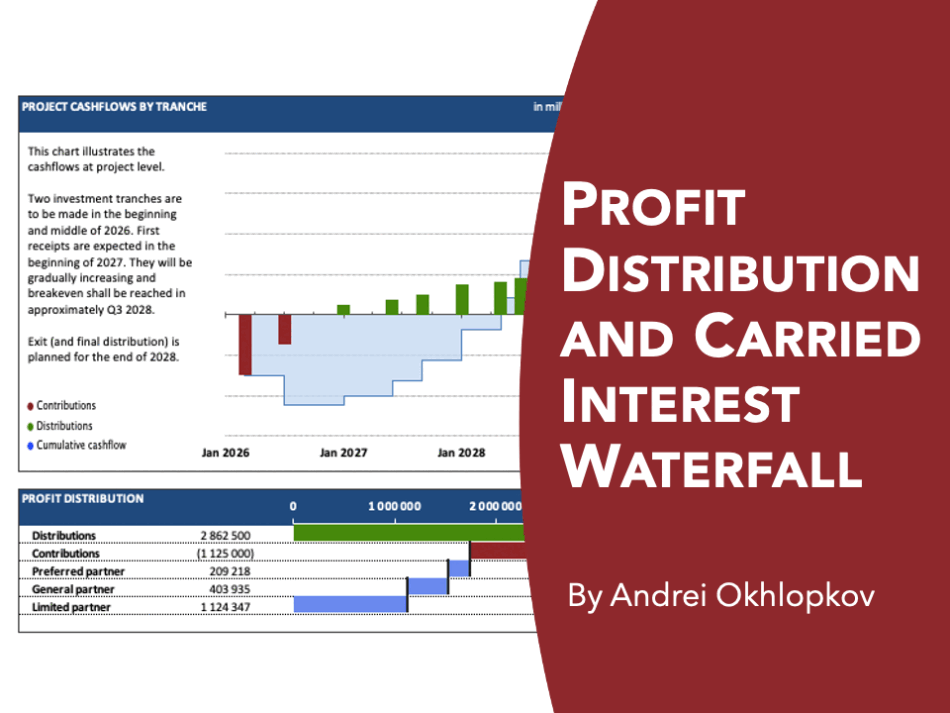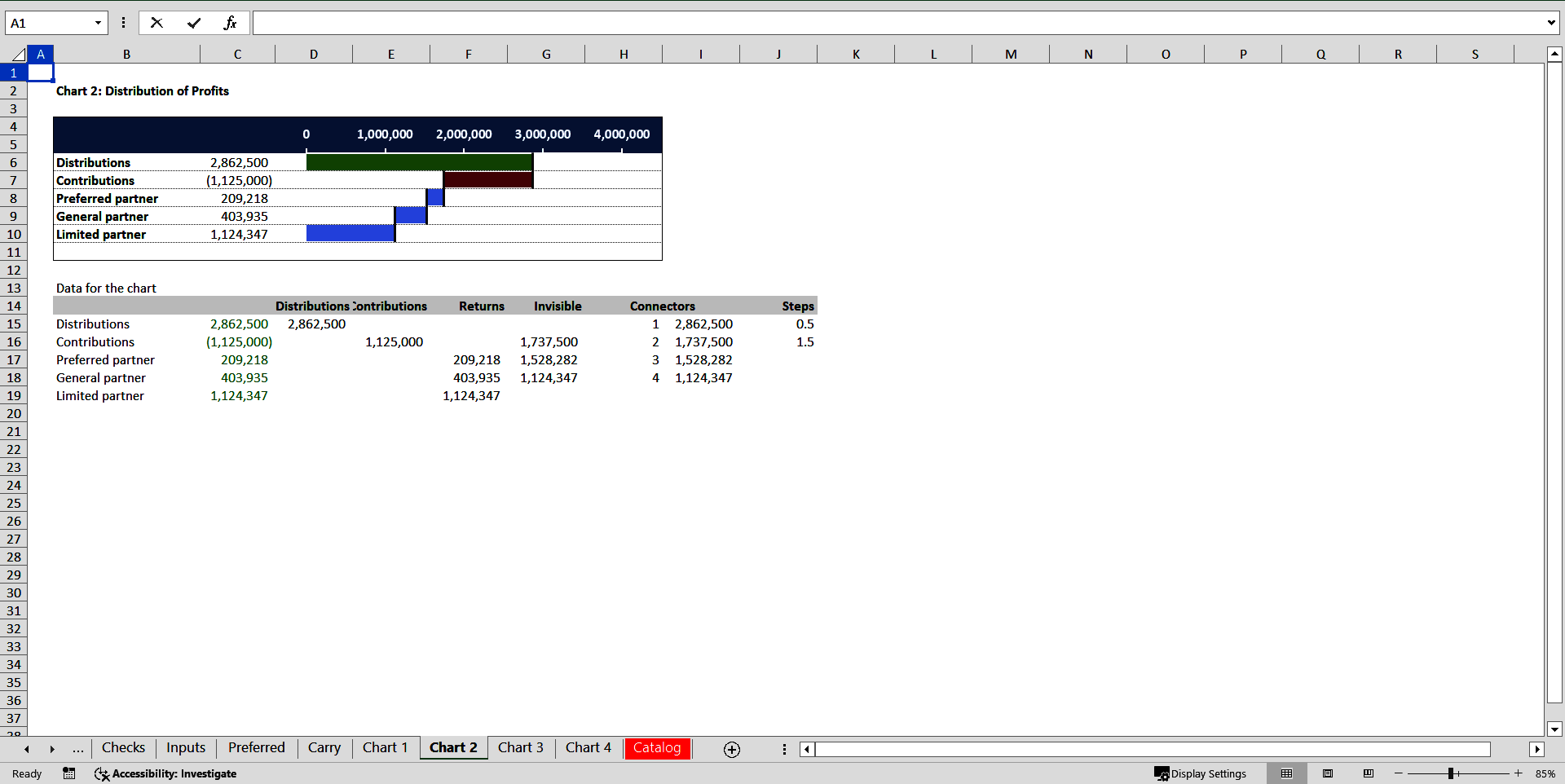Profit Distribution and Carried Interest Waterfall (Excel XLSX)
Excel (XLSX) + supplemental PDF
BENEFITS OF THIS EXCEL DOCUMENT
- A professional finanacial model to calculate distribution of profits in a joint venture between partners
- Incorporates granular inputs
- Produces detailed reports and charts
PRIVATE EQUITY EXCEL DESCRIPTION
This template describes real-world mechanisms of distributing profits between project participants. It starts with modeling a distribution to a preferred partner, who has priority rights on the distributions and receives a guaranteed return on his investment, until his contribution is repaid. Even thereafter he might be eligible to some equity incentives (kickers), which are included in this model as well.
Remaining profits are then distributed between common shareholders. A common setup in many private equity and other investment ventures is when a minority partner (general partner) carries out investment management activities. To motivate the general partner his proportion in profits can be made higher than merely his equity share if the project performs well.
This mechanism is called ‘carried interest' and is normally set up in tiers, or buckets. Every tier corresponds to a certain level of profit to limited partners. Within every tier profits are distributed between GP and LP in a certain proportion. When a tier is filled, distribution moves to the next tier. Every successive tier has a distribution proportion more favorable to the general partner.
Under most carried interest arrangements, there are three hurdles introduced:
Hurdle 1 – preferred return. This covers the initial investment and some minimum profitability (e.g. 20%). In this bucket profits are distributed in proportion to equity participation. In some cases limited partners keep all earnings.
Hurdle 2 – catch-up. Once the interests of limited partners are satisfied, the general partner ‘catches up' on his profits. In this bucket a more substantial portion of earnings is assigned to him.
Hurdle 3 – carried interest itself. The general partners starts getting an even higher share of profits.
In some ventures there can be more hurdles.
This template has four levels of tiers but can be amended to a higher number if needed very quickly. It can be built into your financial models, used for the calculations of actuals (also when payments occur at non-regular intervals) or for making accounting accruals.
The template is made in a very structured way which allows putting it, if required, into deal documentation and correspondence.
The model is supported by four charts:
1) A chart depicting every contribution and distribution on a timescale, with cumulative cashflow (exposure), estimated breakeven point and cash position at the end of the project.
2) A chart illustrating the waterfall (total contributions, distributions and split between the partners)
3) A chart showing annual and cumulative cashflows to every partner
4) A chart showing total contributions and distributions to every partner
Got a question about the product? Email us at support@flevy.com or ask the author directly by using the "Ask the Author a Question" form. If you cannot view the preview above this document description, go here to view the large preview instead.
Source: Best Practices in Private Equity, Financing Excel: Profit Distribution and Carried Interest Waterfall Excel (XLSX) Spreadsheet, Andrei Okhlopkov









